TYPE DESIGN INFORMATION PAGE last updated on Fri Oct 17 12:07:42 EDT 2025
FONT RECOGNITION VIA FONT MOOSE
|
|
|
|
|
Fonts for Berber/Tifinagh/Tamazight | ||
|
|
|
|
SWITCH TO INDEX FILE
45 Coated
| 45 coated is a studio of Shadday d.S.C, a Spanish freelance graphic designer based in Las Palmas on the Canary Islands. Creator of Lybkana (2012), a typeface that is based on a petroglyph found in the Canary Islands. The paintings and engravings belonged to a pre-Hispanic period (known as Guanche). The signs are in a defunct language called Libyan-Berber, which was spoken from the Canary Islands to Egypt. [Google] [More] ⦿ |
Berber association located in Ibrir. Creators of the dingbat typeface Amazigh Motifs (2008). [Google] [More] ⦿ | |
Akatab (2020) is a free Unicode font for rendering Tifinagh characters in the Tamahaq and Tamashek languages. Developed by SIL, Akatab ("writing") is designed to reflect a handwriting style and even the writing in sand effect. SIL writes: Historically this writing system has been written in both right-to-left and left-to-right orientations. Akatab has the necessary characters and features to write in both directions. This font uses state-of-the-art OpenType and Graphite font technologies to provide accurate typography including the formation of bi-consonant ligatures. [Google] [More] ⦿ | |
| |
Casablanca, Morocco-based designer of the handcrafted Tifinagh typeface Totem (2016), which was commissioned by the Royal Institute of Amazigh Culture. [Google] [More] ⦿ | |
Berber font (Tifinagh) by Arezki Buzefran, 1995. [Google] [More] ⦿ | |
Andreu Balius Planelles
| |
Free Amazigh truetype fonts Tifina (Djamel Bouaziz, 1993), Amazigh Algerian (URW, 1993), AATIM (4 weights). [Google] [More] ⦿ | |
Blancoletters
|
For his graduation work in the Masters of Type Design program of the University of Reading, Juan Luis Blanco (Spain) created the Latin, Greek, Cyrillic, Tifinagh, Arabic typeface family Amaikha (2014). Amaikha is characterized by Latin warmth and roundness. A list of his typefaces:
Speaker at ATypI 2016 in Warsaw on A Typographic Maghribi Trialogue. In this talk, he explains, together with Laura Meseguer and Krystian Sarkis, the Typographic Matchmaking in the Maghrib project of the Khatt Foundation, which tries to facilitate a cultural trialogue as well as shed a typographic spotlight on the largely ignored region of the Maghreb in terms of writing and design traditions. The specific goal of the collaboration is the research and development of tri-script font families (for Latin, Arabic and Tifinagh) that can communicate harmoniously. [Google] [MyFonts] [More] ⦿ |
| |
Klingspor link. Fontspace link. Dafont link. Kernest link. Fontsquirrel link. Google Plus link. [Google] [More] ⦿ | |
DejaVu Fonts
| The DejaVu fonts form an open source font family based on the Bitstream Vera Fonts. Free download. Its purpose is to provide a wider range of characters (see Current status page for more information) while maintaining the original look and feel through the process of collaborative development. Included are DejaVuSans-Bold, DejaVuSans-BoldOblique, DejaVuSans-Oblique, DejaVuSans, DejaVuSansCondensed-Bold, DejaVuSansCondensed-BoldOblique, DejaVuSansCondensed-Oblique, DejaVuSansCondensed, DejaVuSansMono-Bold, DejaVuSansMono-BoldOb, DejaVuSansMono-Oblique, DejaVuSansMono-Roman, DejaVuSerif-Bold, DejaVuSerif-BoldOblique, DejaVuSerif-Oblique, DejaVuSerif-Roman, DejaVuSerifCondensed-Bold, DejaVuSerifCondensed-BoldOblique, DejaVuSerifCondensed-Oblique, DejaVuSerifCondensed. Authors and contributors comprise Adrian Schroeter, Ben Laenen, Dafydd Harries, Danilo Segan (Cyrillic), David Jez, David Lawrence Ramsey, Denis Jacquerye, Dwayne Bailey, James Cloos, James Crippen, Keenan Pepper, Mashrab Kuvatov, Misu Moldovan (Romanian), Ognyan Kulev, Ondrej Koala Vacha, Peter Cernák, Sander Vesik, Stepán Roh (project manager; Polish), Tavmjong Bah, Valentin Stoykov, and Vasek Stodulka. The idea is to eventually cover most of unicode. Currently, this is covered: Latin (+supplement, extended A and part of extended B), IPA, Greek, Coptic, Cyrillic, Georgian, Armenian, Hebrew, N'ko, Tifinagh, Lao, Canadian aboriginal syllabics, Ogham, Arabic, math symbols, arrows, Braille, chess, and many dingbats. Alternate download site. Wiki page with download information. |
Denis Roegel
| |
Spanish language site for various non-Latin language fonts. A sampling: Afus Deg Wfus 2 (for Berber), AlKatib1 (2001, an Arabic typeface by Naseem Amjad), Albanian, Alice_0 (Lao typeface by by Ngakham Southichack), LAOMAY_5 CHAREUNSILP (Lao typeface by by Soupasith Bouahom), Arial AMU (1999, Armenian typeface by Ruben Tarumian), BaltFrutigerLight, BaltHelveticaMedium, BaltNewCenturySchoolbookMedium, BaltOptimaMedium, BaltTiffanyMedium, BaltUniversityMedium, CarloAtor (1997, Arabic family by Timm Erickson, Summer Institute of Linguistics), Caligraf-W, Ciula (1996, a Romanian typeface by Paul Hodor), Cursiv (Romanian), AnlongvillKhek, GabrialAtor (another Arab family by Timm Erickson), Gin, Greek (1993, by Peter J. Gentry&Andrew M. Fountain), HandSign (1993, Sam Wang), HFMassisShantNUnicode (1990-1994, an Armenian unicode typeface by BYTEC Computers and Massis Graphics), HONGKAD (1994, a family by Dr. Hongkad Souvannavong), IsmarBold, IsmarLight, Lakshmi, X000000A (1994, a lao typeface by Sith Bouahom), LAOMAY_2-CHAREUNSILP, Alice3Medium, Alice0Medium, Langagedessignes (1998, by Philippe and François Blondel), NorKirk (1997, a great Armenian typeface by Ruben Tarumian), NovaTempo (for Esperanto), Pazmaveb (for Armenian), ILPRumanianB100 (1996, by Charles J. Coker), Saysettha-Lao, Saysettha-LaoBold, SenzorgaAnhok, Timok, Tribuno, Turn-W, TimesUnicode, ArialAMU, PoliceTypeAPI (for Armenian), Cieszyn-Regular, PoojaNormal, Shibolet (1995, Hebrew), Shree-Ass-0552 (2000, by Modular InfoTech), Tudor-Semi-Lite, Webdunia, TimesNRCzech, TNRLiboriusVII (2001, a fully accented Times typeface by Libor Sztemon), GreatMoravia (2001 Libor Sztemon, Czechia), Johaansi-ye-Peyravi (2001, a full accent blackletter typeface by Libor Sztemon, Czechia), TimesNREuskaraEuransiEsperanto (2001, Libor Sztemon). [Google] [More] ⦿ | |
Quebec-based designers of the free Berber and Touareg typefaces HapaxBerbre, HapaxMusique, HapaxTouareg, HapaxTouaregDàG (2005). [Google] [More] ⦿ | |
Batna, Algeria-based creator of the Amazigh typefaces Tichrirt (2017) and Amla (2017). [Google] [More] ⦿ | |
Rabat-based institute with many free Amazigh and Tifinagh fonts dated 2004-2006: Hapax-Berbère, Tamalout-Nouffouss, Tamalout-Noufouss-UNICODE, Tamalout-Standard, Tamalout-Standard-UNICODE, Tamalut-asqqul, Tamalut-nufus, Tamzwart-asqqul, Tamzwart-nufus, Tamzwart-Nouffouss, Tamzwart-Noufouss-UNICODE, Tamzwart-Standard, Tamzwart-Standard-UNICODE, Tassafout-Nouffouss, Tassafout-Noufouss-UNICODE, Tassafout-Standard, Tassafout-Standard-UNICODE, Tassafut-asqqul, Tassafut-nufus, Tazdayt-asqqul, Tazdayt-nufus, Tazdayt-Nouffouss, Tazdayt-Standard, Teddus-asqqul, Teddus-nufus, Teddus-Nouffouss, Teddus-Noufouss-UNICODE, Teddus-Standard, Teddus-Standard-UNICODE, Tifinaghe-IRCAM, Tifinaghe-IRCAM-Aggoug, Tifinaghe--IRCAM-Izuren, Tifinaghe-IRCAMprime, Tifinaghe-Ircam2, Tifinaghe-Ircam-Unicode, Tifinaghe-Ircam-Unicode, Tifinaghe-Izuren-IRCAM, Tifinaghe-Tazdayt-Nouffouss-UNICODE, Tifinaghe-Tazdayt-Standard-UNICODE, Tifinaghe-Tazirit, Tifinaghe-ircam3D, Tifinaghe-ircamTissnat-irrumin, Tifinaghe-Ircam-taromit, Tifinaghe-Tazirit-UNICODE. Unicode versions. [Google] [More] ⦿ | |
Dutch creator of an Oriya metafont (1996-1998). From the same source, Malayalam PostScript and TrueType fonts, and Tamazight (Berber) PostScript and TrueType fonts. He also created Malayalam metafonts in 1994 (and subsequently Malayalam PostScript and TrueType fonts), a Unicode Shapes font (TeX, PostScript, TrueType), and Tamazight (Berber) PostScript and TrueType fonts. Home page. Metafonts can be found here and here. His Malayalam fonts were created as uniform stroke only, while Oriya metafonts exist in both uniform and modulated stroke. Jeroen says: It is my intention to release the fonts under GPL, but not all copies around have this notice on them. The GNU Freefont project included his fonts for the ranges of Oriya (U+0B00-U+0B7F) and Malayalam (U+0D00-U+0D7F). Subsequently, the GNU Freefont project dropped all contributions and support for Oriya. [Google] [More] ⦿ | |
Juan Luis Blanco
| |
Designer of Foycauld (2016), a tifinagh font based on Charles de Foucauld's handwriting. It covers the glyphs and variants relevant to Ahaggar Tamahak. [Google] [More] ⦿ | |
LaTeX Navigator
| General links on typography and fonts, compiled by Denis Roegel (with earlier contributions by Karl Tombre who is no longer involved). Very, very useful. This page contains, among other things:
|
Ottawa-based designer of the Berber fonts Tifinagh Typewriter (2014), aarrawki (2014, for the magazine Armat), Chalk Font (2014) and Square Font (2014). One can download all his Tifinagh fonts, which were designed between 2011 and 2014, here: Amazigh-Motifs1, TifinaghAmghsdaTunnt-Cur, TifinaghAmghsdas-Regular, TifinaghAmnaFont, TifinaghKabaw-Amna, TifinaghKabaw-Brga, TifinaghKabaw-Hatamalbroni, TifinaghKabaw-Hosamalhjaj, TifinaghKabaw-Jomasda, TifinaghKabaw-Mnad, TifinaghKabaw-RmdanDamja, TifinaghKabaw-SaidSifaw, TifinaghKabaw-Tanes, TifinaghKabaw-Teddus, TifinaghTawaltAarawki-Regular, TifinaghTawaltAghanim-Regular, TifinaghTawaltAmaynu-Regular, TifinaghTawaltAmckan-Regular, TifinaghTawaltAmzruy-Regular, TifinaghTawaltAnndh-Regular, TifinaghTawaltArmat-Regular, TifinaghTawaltAsdad-Regular, TifinaghTawaltAsma-Regular, TifinaghTawaltAtrar-Regular, TifinaghTawaltAzuwar-Regular, TifinaghTawaltAzwil-Regular, TifinaghTawaltAzzgrar-Bold, TifinaghTawaltAzzgrar-ExtBd, TifinaghTawaltAzzgrar-SemBd, TifinaghTawaltAzzgrar-SmBdIt, TifinaghTawaltCool-Italic, TifinaghTawaltCool-Regular, TifinaghTawaltImkni-Italic, TifinaghTawaltImkni-Regular, TifinaghTawaltTajddigt-Reg, TifinaghTawaltTajkurt-Regular, TifinaghTawaltTakerdat-Reg, TifinaghTawaltTallunt, TifinaghTawaltTamrrayt-Reg, TifinaghTawaltTarrawt-Regular, TifinaghTawaltTassiwet-Reg, TifinaghTawaltTighmar-Regular, TifinaghTawaltTighmert-Reg, TifinaghTawaltTunnet-Regular, TifinaghTawaltawrm-Bold, TifinaghTawaltawrm-ExtraBold, TifinaghTawaltawrm-Normal, TifinaghTawaltawrm-SemiBold, TifinaghTawaltimcm-Regular, TifinaghTwaltAghezzif-Regular, TifnaghTawaltAmattay-Bold, TifnaghTawaltAmattay-Italic. Behance link. [Google] [More] ⦿ | |
Nador, Morocco-based designer of the dotted Tamazight font Amsawad Azday (2018). [Google] [More] ⦿ | |
Berber fonts by the association Afus deg Wfus, located in Roubaix, France. See also here. [Google] [More] ⦿ | |
French site with Tifinagh (Berber) derived fonts: Amazigh-Algerian Amazigh-AuntJudy, Amazigh-Civitype, Amazigh-GoodCityModern, Amazigh-GraphicLight, Amazigh-Treacyfaces, Amazigh-Arial-Bold-Italic, Amazigh-Arial-Bold, Amazigh-Arial-Italic, Amazigh-Arial, Amazigh-Courier-New-Italic, Amazigh-Arial-Rounded-MT-Bold, Amazigh-Book-Antiqua, Amazigh-Bookman-Old-Style-Bold, Amazigh-Braggadocio, Amazigh-Britannic-Bold, Amazigh-Brush-Script-MT-Italic, Amazigh-Century-Gothic, Amazigh-Colonna-MT, Amazigh-Desdemona, Amazigh-Footlight-MT-Light, Amazigh-Impact, Amazigh-Kino-MT, Amazigh-Wide-Latin, Amazigh-Matura-MT-Script-Capitals, Amazigh-Monotype-Corsiva, Amazigh-Times-New-Roman-Bold-Italic, Amazigh-Times-New-Roman-Bold, Amazigh-Times-New-Roman-Italic, Amazigh-Times-New-Roman, Amazigh-tifinagh-Masensen, Amazigh-tifinagh-Yugurten. [Google] [More] ⦿ | |
Naïma Ben Ayed
| |
Naïma Ben Ayed Bureau
|
Future Fonts link. [Google] [More] ⦿ |
Osman Nuri Alkan
| |
Quebec-based computer scientist who has been involved in the multilingual and Unicode world. He was one of the authors of a proposal adding Tifinagh to Unicode. He is currently working with people in France and Niger on the development of OpenType fonts to support Tuareg. He is also involved in other African scripts such as Moroccan and Sahelian Arabic and a recent script from the Congo (Mandombe). [Google] [More] ⦿ | |
Pierre di Sciullo
| |
Qui Résiste
| Pierre di Sciullo (b. 1962) is the award-winning Parisian designer of FF Flèches and Minimum. At FUSE17 (1997), he published SpellMe. Creative Alliance designer of Gararond. In 2000, he started QuiRésiste. Bio at FontFont. In FUSE 5, he created the experimental font ScratchedOut. There is also a free pixel family called Aligourane for the Tuaregs (in their national writing system, Tifinagh). Commercial pixel families: Zèbre, Minimum serifs, 3 par 3, and Minus. He also made a medieval-futuristic font Nicolas2000 (nice!), several experimental fonts such as Quantange, Syntetic, Basnoda, Miroir, Epelle-moi, Amanar (2009, runic), Kouije, Sintetik, Quantane, Paresseux, Sonia, and Spell me, as well as more traditional fonts such as Gararond, Gararond Lié, Gararaide, Garadico, Durmou, and destructionist fonts such as Découpé and Paris-Gretz. At Buildingletters, one can buy his Aligourane (1995) in these weights: Contour, Noir, Orner, Leger and Etroit, as well as Amanar (2003) in these weights: Condense, Decor, Demigras, Noir. [Google] [More] ⦿ |
Berber fonts. From Dar Al-Computer (1995): Amazigh Standard, AmazighEtenduPS, Amazigh-Sahafa, Amazigh-Sahafi, Amazigh Jarida. From Djamel Bouaziz, a rune font, Tifina (1993). From Monotype, TimesAmazighPS. [Google] [More] ⦿ | |
Aka the "Undergrond Grammarian". Designer of Amazigh-GraphicLight (a Berber font), ThebGL (Greekish runes, 1994), Morelife, Landliebe (2001, a connected roughly outlined script), Scarlett (2007, a gorgeous Mexican party theme font), Graphic Light, and Light Painter (1994). Font Squirrel link. Dafont link. [Google] [More] ⦿ | |
Runic World Tamgaci
| Gumushane, Turkey, and Gothenburg, Sweden-based designer of fonts developed based on old European runic inscriptions, old Asian runic inscriptions, old Hungarian runic inscriptions, runic inscriptions found in Africa, and italic inscriptions such as Etruscan and Iberian. Typefaces from 2022: Ongunkan All Runic Unicode A (a major font that covers Latin, Old Hungarian, Old Turkic, Old Italic, runic, Tifinagh, Lycian, Lydian, Carian, Phoenician, Cypriot, Ogham, Old South Arabian, Old North Arabian, Old Persian, and Ugaritic), Ongunkan Phrygian, Ongunkan Armanen Runes (a series of 18 runes, closely based on the historical Younger Futhark, introduced by Austrian mysticist and Germanic revivalist Guido von List in his Das Geheimnis der Runen, published as a periodical article in 1906, and as a standalone publication in 1908), Ongunkan Danish Futhark (he explains: Prior to 500 AD the 24-rune Elder Futhark was used in Denmark. From 500 AD to 800 AD there were many transitional futharks, reflecting a change from the 24-rune Futhark to the 16-rune Futharks. By the end of this period, the 24-rune Futhark went completely out of use and the 16-rune Futharks had prevailed.), Ongunkan Gothenburg Futhark Swe (based on the 26-letter Bohuslän runes, which are used in the west coast area), Ongunkan Latin Space, Ongunkan Latin Techno, Ongunkan Norwegian Futhark (he explains: The oldest runes discovered in Norway date from 400 AD. They were based upon the 24-rune Elder Futhark of Germanic origin. Two of the runes in the Elder Futhark, Pertra and Eoh, have never been found in any Norwegian rune text. From 550 AD to 700 AD there was a transition period between the older 24-rune Futhark and the newer 16-rune Futharks. By the end of this period, the 24-rune Futhark went completely out of use and the 16-rune Futharks had prevailed. About 900 AD, the Shorttwiggs-runes were introduced from Sweden. Shortly thereafter, from 1000 AD, Futharks with more than 16 runes became more prevalent, as these were more consistent with the Latin alphabet. These types of runes were used in Norway up to 1800 AD), Ongunkan Anglo Saxon Spirit, Ongunkan Younger Futhark One, Ongunkan Younger Futhark (he explains: The Younger Futhark, also called Scandinavian runes, is a runic alphabet and a reduced form of the Elder Futhark, with only 16 characters, in use from about the 9th century, after a transitional period during the 7th and 8th centuries. The reduction, somewhat paradoxically, happened at the same time as phonetic changes that led to a greater number of different phonemes in the spoken language, when Proto-Norse evolved into Old Norse. Also, the writing custom avoided carving the same rune consecutively for the same sound, so the spoken distinction between long and short vowels was lost in writing. Thus, the language included distinct sounds and minimal pairs that were written the same. The Younger Futhark is divided into long-branch (Danish) and short-twig (Swedish and Norwegian) runes; in the 10th century, it was further expanded by the "Hälsinge Runes" or staveless runes. The lifetime of the Younger Futhark corresponds roughly to the Viking Age. Their use declined after the Christianization of Scandinavia; most writing in Scandinavia from the 12th century was in the Latin alphabet, but the runic scripts survived in marginal use in the form of the medieval runes (in use ca. 1100-1500) and the Latinised Dalecarlian runes (ca. 1500-1910)), Ongunkan Fantastic Latin, Ongunkan Modern Latin, Ongunkan Sweden Futhark, Ongunkan Sweden Dalecarlian Run (a late version of the runic script that was in use in the Swedish province of Dalarna until the 20th century), Ongunkan Sweden Dalecarlian Run, Ongunkan Old Turkic Yenisei (based on the Yenisei inscriptions, which consist of a total of 158 Turkish inscriptions, kurgans (graves) and rock stones that have been found along the Yenisei river, which passes through the Khakasya, Tuva and Altai autonomous republics in Russia. The inscriptions were written with Turkish stamps, also known as the Orkhon Alphabet), Ongunkan Old Turkic Arrival (based on an alien language in the science fiction movie called Arrival), Ongunkan Old Turkic Predator (old Turksih runic; based on alien script from the Fantastic Predator movie), Ongunkan Runic Predator (runic; based on alien script from the Fantastic Predator movie), Ongunkan Runic, Ongunkan Greek Script, Ongunkan Karamanli Turkic Scrip (based on the Greek alphabet used by the Karamanli Turks (who are Orthodox Christians) and adapted to Turkish), Ongunkan Kensington Runestone (a rune-covered slab of brownstone that was claimed to have been discovered in central Minnesota in the United States in 1898; probably a hoax perpetrated by its discoverer, Olof Öhman), Ongunkan Old Hungarian Runic (used in parts of Transylvania until the 1850s; banned by Istvan, the first Christian king of the Hungarians (Szekel)), Ongunkan Rosetta Stone (ancient Greek as seen on Egypt's rosetta stone), Ongunkan Tifinagh Berber. [Google] [MyFonts] [More] ⦿ |
Shadday
| |
Stepan Roh
| |
Tagmukay is a Shifinagh (also know as Tifinagh) script font with support for the Tawallammat Tamajaq language. It is a free Unicode font by SIL that features bi-consonant ligatures and alternate forms necessary to support this language. It has Graphite and OpenType tables that have the logic to support these features. Developed by Peter Martin. [Google] [More] ⦿ | |
Dead link. Berber font links. And fonts such as Afus Deg Wfus by Solidarite Espace culturel berbère europeen. And tens of other Berber fonts (truetype). [Google] [More] ⦿ | |
Tifinagh or Libyc was used in antiquity by speakers of the Libyc languages through North Africa and on the Canary islands. It existed from 2000BC until today. [Google] [More] ⦿ | |
Berber fonts. Can only access this page if you allow cookies. [Google] [More] ⦿ | |
Berber fonts AfusDegWfus1, AfusDegWfus2, Amazigh-Times-New-Roman. [Google] [More] ⦿ | |
Type Republic
|
Balius set up Garcia Fonts in 1989. He co-founded Typerware in 1996 (which existed until 2001), where he managed type-related projects for La Vanguardia newspaper, La Fura dels Baus and Primavera Sound Festival. In 2003, he launched Type Republic, catering to clients such as SEAT/Wolkswagen group, Victoria's Secret, Acciona, Ferrovial, and designed text typefaces for newspapers such as La Gaceta, Tribuna (Salamanca, Spain) and La Discusion (Chile). Some fonts sold through MyFonts:
Custom / bespoke typefaces include Carmen VS (for Victoria's Secret, New York), Ferrovial, Dsignes (a wayfinding sans), VLC (for Valencia Tourism Bureau), Lladro (sans), Forum. |
Tamagotchi, or Umbreon 126, made several fonts with the aid of FontStruct in 2012 and 2013. These include pixel typefaces (FS Rebellion, FS Rept, FS Comic Mono, FS Flower Shop, FS 126 Serif), but also truly large workhorse typefaces. For example, FS 126 Sans (a pixel sans face) has 4871 characters and covers Nko, Lisu, Armenian, Tai Le, Ogham, Thaana, Georgian, Coptic, Kayah Li, Tifinagh, Samaritan, and Lao. The 3114 glyph pixel typeface FS Semioriginal covers Hiragana, Katakana, Arabic, Armenian, Hebrew, Bopomofo, Georgian, Greek, and Cyrillic. The 2000+ glyph pixel typeface FS Unoriginal covers Hiragana, Katakana, Arabic, Armenian, Hebrew, Bopomofo and Tifinagh. Other typefaces include FS Fat Piano, FS Typ Stencil (piano key face), FS Frakletter (blackletter) and FS Stupid Me (white on black typeface). [Google] [More] ⦿ | |
Article by Yannis Haralambous on typesetting Berber in TeX. It includes some description of METAFONT fonts made by him: tifi, tifis, tifisb, tifib. [Google] [More] ⦿ | |
Bab Ezzouar, Algeria-based designer of the connect-the-dots typeface Tifinegh Elagant (2017). [Google] [More] ⦿ | |
During his studies in Marrakesh, Morocco, Yassine Ait-el-Mouden designed these Tifinagh fonts: Tifinagh Ayt Lmuddn Anfriwn, Tifinagh Ayt Lmuddn Dar Waman, Tifinagh Ayt Lmuddn Iziki, Tifinagh Ayt Lmuddn Ighsan, Tifinagh Ayt Lmuddn Jimmi, Tifinagh Ayt Lmuddn Mrym. [Google] [More] ⦿ | |
Designer and illustrator in Berlin (was: Bonn), Germany. In 2012, he made a wonderful ornamental caps face, World Font, which illustrates 26 of the main scripts in the world today. [Google] [More] ⦿ |
|
|
|
|

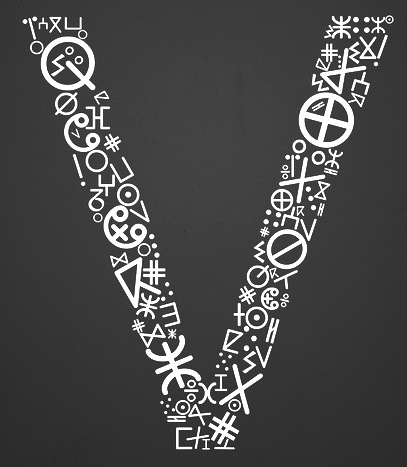
 Karlsruhe-based software developer. Creator of the large (and free) Unicode font
Karlsruhe-based software developer. Creator of the large (and free) Unicode font 
 [
[ Juan Luis Blanco is a graphic designer, type designer and calligrapher based in Zumaia in the heart of the Basque country. Since 1993, he works as a freelancer graphic designer. In 2013, he obtained an MA in Typeface Design from the University of Reading. Currently he combines calligraphy classes and graphic design with typographic projects that focus on Basque lettering as well as multi script typefaces involving the Latin, Arabic and Tifinagh alphabets.
Juan Luis Blanco is a graphic designer, type designer and calligrapher based in Zumaia in the heart of the Basque country. Since 1993, he works as a freelancer graphic designer. In 2013, he obtained an MA in Typeface Design from the University of Reading. Currently he combines calligraphy classes and graphic design with typographic projects that focus on Basque lettering as well as multi script typefaces involving the Latin, Arabic and Tifinagh alphabets. 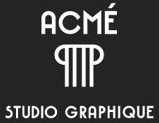 Paris-based creator of
Paris-based creator of  Canadian type designer. His typefaces:
Canadian type designer. His typefaces: 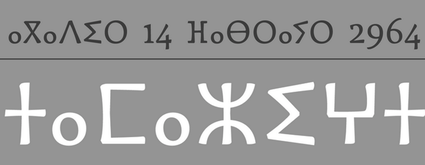 [
[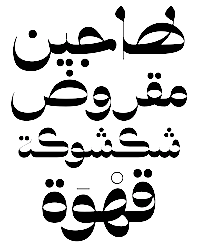 [
[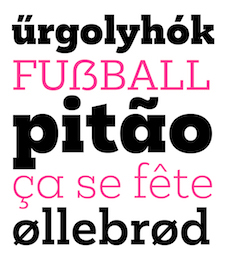 Naïma Ben Ayed (b. 1984, Provence, France) graduated from Ecole Estienne in Paris in 2009. She also studied at KABK in Den Haag. She designed Arabic and Latin fonts at Dalton Maag London from 2012 to 2018, where she is still based. She took part in the 3rd edition of the
Naïma Ben Ayed (b. 1984, Provence, France) graduated from Ecole Estienne in Paris in 2009. She also studied at KABK in Den Haag. She designed Arabic and Latin fonts at Dalton Maag London from 2012 to 2018, where she is still based. She took part in the 3rd edition of the  Catalan foundry headed by Andreu Balius (b. 1962), who is based in Barcelona and Son (Alt Aneu), Lleida. Balius holds a PhD in Design from the University of Southampton (UK) and teaches typography and type design at EINA, University School of Design and Art, in Barcelona.
Catalan foundry headed by Andreu Balius (b. 1962), who is based in Barcelona and Son (Alt Aneu), Lleida. Balius holds a PhD in Design from the University of Southampton (UK) and teaches typography and type design at EINA, University School of Design and Art, in Barcelona.